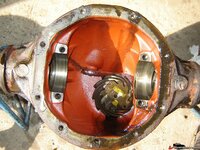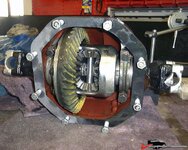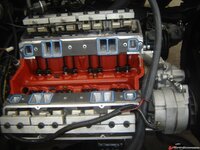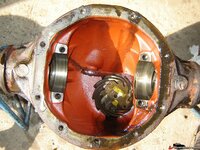kwplot, I also have a dremel with all the accessories, but don't recall using it on the block. I start out using a carbide burr on a die grinder to soften the roughest areas, but be careful; a good burr eats material fast and you can go too far quickly. Also, a burr can make cuts hard to smooth out later. After a little with the burr, I use stones on a drill. Most of the 1/4 shank stones I use came from Harbor freight and that I bought on sale.
Once I have the surface smoothed out to my liking, I use a long shoulder bolt with a hack saw notch cut in it for some paper rolls. I cut a strip of emory or any paper I have handy, coil it around the long shoulder bolt and start polishing with the drill. Start with coarse paper and work down to finer grit. There are pre made paper rolls available for this, but I always make my own and like the reach of the 6 inch shoulder bolt. Check the Eastwood catalog, or Harbor freight for pre made paper rolls. This is the way I have polished three lifter valleys.
After each one, I swear I will never do another. Plan on spending 25+ hours doing it, but of course, the higher the finish the more time. There is no magic or secret trick I know of, just an exercise of will and endurance. You start with coarse cutters and work down to finer and progressively finer grits until the desired finish is achieved.
You might try the dremel, but I suspect the motor will burn out long before you finish. I have had mine sent back for rebuild once and now just buy a new one when on sale. It is about the same price and maybe less expensive buying new. I buy Chicago electric drills from HF when on sale and keep at least one backup handy. Good luck!
As an after thought I will add: if you have access to a source of rotary files of different shapes you can use them. I did my first block that way and liked the rotaty files. My local hardware store had a great selection of different shapes that worked for me, but no store near me has any since I moved.





